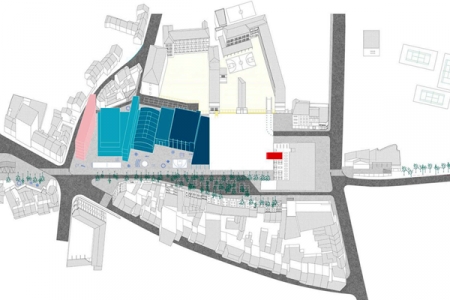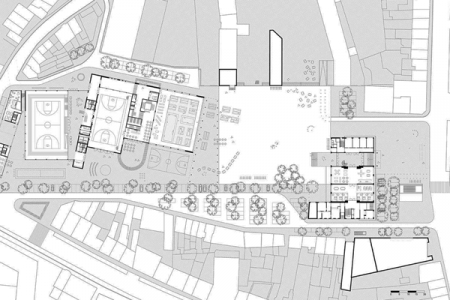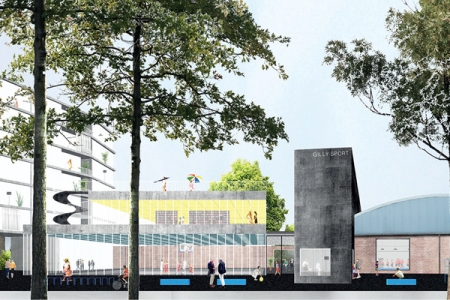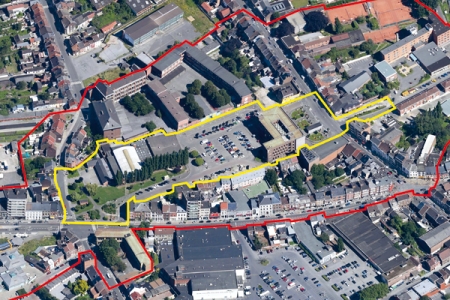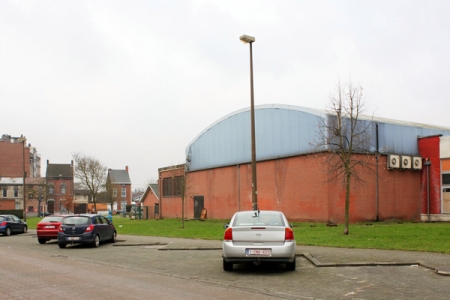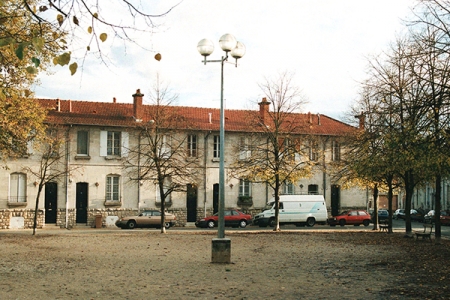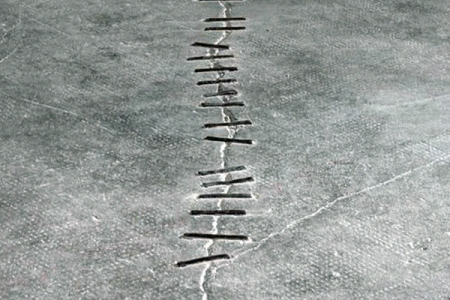Making Room for Gilly
Charleroi (BE) – Runner-up
TEAM DATA
Team Representative: Radim Louda (CZ) – architect; Associates: Pierre Burquel (BE), Paul Mouchet (FR), Valentin Piret (FR) – architects
Contributor: Tina Javornik (SI) – architect
CENTRAL, office for architecture and urbanism - 28 rue du Conseil bte 8, 1050 Brussels – Belgique
+32 486 76 11 34 – info@central-net.eu – www.central-net.eu
See the complete listing of portraits here
See the site page here

CENTRAL, office for architecture and urbanism
INTERVIEW
Click on the images to enlarge
1. How did you form the team for the competition?
CENTRAL is a Brussels-based office that focuses on architecture and urbanism; it was founded in 2015 by 4 associates. After a strong experience as project leaders in different offices in Belgium, Ljubljana and Paris, Pierre Burquel, Radim Louda, Paul Mouchet and Valentin Piret have established a common practice that concerns with matters of architectural and urban design through collaborative and strategic processes. Tina Javornik –a freshly graduated architect from Slovenia– currently lives in Brussels; her collaboration was precious for the project and the team.
2. How do you define the main issue of your project, and how did you answer on this session main topic: Adaptability through Self-Organization, Sharing and/or Project (Process)?
For any site to become a true ‘lieu’ for the city and its people it is important to reach beyond the traditional urban master planning that often lacks sensibility, complexity and adaptability.
Turning the basic qualities and logics of the site into a strong urban experience means defining a strategy able to evolve and adapt in time – an urban strategy that tames the environment, reveals its potential and transforms in a quick and targeted manner the site uses while preparing the ground for its ambitious future configuration.
3. How did this issue and the questions raised by the site mutation meet?
In order to kick-off the transformation of the site we propose to structure the urban process around 5 principles:
- EMPTYING: A wide urban room for Gilly, as the first step for an ambitious urban renewal;
- DEFINING: The project proposes to redefine the relation between the square and the surrounding buildings to activate its urban condition and shape;
- PROCESSING/REUSING: Despite the actual lack of quality of the sport complex buildings, the existing layering logic is seen as an opportunity to develop a flexible building process able to define a characteristic public space; this progressive process allows the site transformation in time and need;
- CONNECTING: the public space and landscape logics of the site are extended, creating a continuous promenade under trees punctuated by public space interventions;
- SHARED REFINING: The process for the redevelopment of the Place Destrée neighbourhood acts as an urban vision defined by clear principles able to produce strong yet adapted changes; more than defining an agenda for a design, we propose a development logic that settles the basis for a shared refining between the city, the citizens, the developers and the planners.
4. Have you treated this issue previously? What were the reference projects that inspired yours?
For the last 5 years we have worked in different offices on different architectural and urban scales; this experience has naturally deeply influenced us. We also have had the opportunity to teach in different schools since 2012 – at the ENSA-Versailles, Radim Louda teaches in the 2nd year studio dedicated to metropolitan issues; at the Brussels’s Faculty of Architecture La Cambre-Horta Paul Mouchet runs a workshop that focuses on the architectural object and its material representation.
Our office –CENTRAL– is the result of those different experiences and of a common interest in the making of the spatial development of the city.
In this sense, we try to evolve in the blurry space between architecture and urbanism; our aim in this blur is to make things happen – we think that simple, targeted interventions and logics can lead to a shared and qualitative urban reality.
5. Today –at the era of economic crisis and sustainability– the urban-architectural project should reconsider its production method in time; how did you integrate this issue in your project?
For us, they are three quotes that define our general attitude towards the architectural and urban production well:
“Has it not been accepted – ever since Kant – that there is an unbridgeable gulf between reality in itself and reality as it appears to us? That our possibilities of knowing have more to do with our own apparatus than with the nature of reality?”
Elia Zenghelis , “Text and Architecture: Architecture as Text”, in Martin van Schaik and Otakar Màčel, eds., Exit Utopia: Architectural Provocations,1956–76 (Munich: Prestel and IHAUU–TU Delft, 2006), 255.
“Our intention has always been to turn architecture towards particularity...of place, person, activity: the form to arise from these.”
Peter Smithson, A+P Smithson, “The Charged Void: Architecture“, The Monacelli Press, 2003
“Architecture is not made with the brain.”
Irenée Scalbert, “Architecture is not made with the brain. The labour of Alison and Peter Smithson“, AA Publications, 2005
6. Is it the first time you have been awarded a prize at Europan? How could this help you in your professional career?
It is the first time. Europan is and has always been a prestigious award for young architects. We see it as one of the first steps that consolidate a young practice and it is in this sense very motivating for us.
Now, the challenge is to bring the project into reality.
